We provide different types of hoppers with wear abrasive plates, according to the need of customers.
Our expert engineers takes a very close eye on the climatic conditions of area & the type of material which is to be used in the machines , after analysing everything our engineers decides which type of metallurgy is to be used .
We have a wide range of hoppers :
Feeder is feeding equipment.
It can feed materials to crusher evenly and continuously and at the same time, some of it can screen materials roughly. It can be used in these areas such as metallurgical industry, coal mining industry, steel industry, building industry, chemical and grinding industry, mineral processing industry etc.
Smooth vibration, reliable operation, long service Life, low noise, and low power consumption, easy to Adjust, simple structure, easy to install, light Weight, small volume, simple maintenance. Are key feature of our feeder equipment.
Vibrating grizzly feeder is basically screener cum Feeder which can deal in feeding of wet material.
Electro mechanical & electromagnetic type of feeder also belongs to our feeder range along with apron feeder & belt feeder.
We mfg. different type of feeders with same specialization & dedication as per customers’ requirements.
The Apron Feeder consists of one or more endless chains to which overlapping pans are attached to form a continuous moving bed particularly suited for conveying heavy duty raw materials such as coal, coke, ore, slag, rock, stone, gravel, clay, etc. They are frequently used as feeders located under crushers and hoppers. Apron Feeders can be installed in horizontal and inclined condition depending on the feeding zone of system layout. It is recommended that for higher conveying efficiency, the feeder’s inclination should be within 10 degrees. Its use lends itself to situation where a belt conveyor is not suitable i.e., for hot materials and large material lumps.
The vibrating grizzly is used to separate ROM feed material into fractions prior to the primary crushing stage of the process. It is used in both large stationary plants and mobile crushing plants. We have the feeder for your application. These feeders utilize high strength steels and high stroke vibrators to produce a high production to weight ratio for portable operations. Heavy duty feeders are designed for stationary plants with their massive frames and high output vibrator mechanisms.
Reciprocating feeder is mainly used for feeding various non-sticky materials. The reciprocating feeder can send massive and granular materials from feed bin to receiving device evenly and continuously. The reciprocating feeder has been widely used in the crushing and screening line of the industries of thermal power plants, beneficiation, sponge iron, cement and chemical industries etc.
Wobbler Feeders provide two functions – feeding oversized material at a controlled rate and scalping out the fines from the feed material. These can be used to accomplish feeding and scalping for industries such as coal, salt, gypsum, phosphate, limestone, bauxite, coke, quartz, granite, aggregate and other mineral processing applications. They are especially good with wet, sticky material with high percentages of clay.
Feeder-Breakers incorporate a chain and flight drag conveyor and a rotating, horizontal pick roll to perform primary size reduction and to feed a belt conveyor or secondary crusher at a specific rate. These machines are ideal for the primary reduction of ROM coal, coke, salt, gypsum, potash and other friable minerals. Feeder-Breakers are designed with an electro-mechanical breaker drive, utilizing a torque control coupling and either an electro-mechanical or hydraulic conveyor drive.
We have highly skilled projects division specializing in the design, manufacture & installation of complete conveyor system for use in various applications including mining, power generation & processing plants.
We provide platforms for easy inspection and maintenance of machine.
We provide special arrangements on conveyors to prevent any outside material mixing in the conveyors.
Our expertise & experience & experience have produced significant advancements in conveyor design.
We have a wide range of conveyors and elevators :
We provide dust roofing along with conveyors as various choices available like semi hooded , fully hooded .
A jaw crusher is generally used as a primary crusher in a crushing circuit. Product is fed into the top of the jaw crusher. The eccentric rotating drive shaft causes the movable jaw to oscillate crushing the aggregate against a fixed jaw. Jaw crushers are run on belt drives driven by an electric motor or diesel engine. Jaw crushers are used extensively throughout the aggregate and mineral processing industry.
A hammer mill is a crusher that can grind, pulverize, and crush a wide range of materials. This rock crusher machine employs a rain of hammer blows to shatter and disintegrate the material. Hammer mills produce a finish product size that is dependent upon...
Hammer mill is mainly used for hard coal and lignite in coal processing plant, coking coal for the iron and steel industry and for soft to medium hard material
A cone crusher is generally used as a secondary crusher in a crushing circuit. Pre-crushed product (usually 3in minus depending on the cone crusher model) is fed through the top of the cone crusher and flows over the mantle. The vertical cone crusher drive shaft rotates the mantle eccentrically below the concave, or bowl liner, squeezing the product and crushing it between the mantle and concave. Cone crushers are usually run on belt drives driven by an electric motor. Cone crushers are used extensively throughout the aggregate and mineral processing industry. The optimized structure and cavity adapting inter-particle crushing principle ensure high performance of crusher.
It improves the efficiency and decreases wear of wear resistance parts and improves quality of final product.
Disintegrators are well designed hammer mills of simple and sturdy construction.
They are ideally suited where coarse grinding of soft and medium hard minerals products is required. The main shaft is the only revolving parts, which require no adjustment. This main shaft runs on Ball/Roller bearings and it contains fix/swing type hammers. All portions of the body where wear and abrasion is expected are lined with replaceable hard alloy liners. The grinding is achieved by the impact of hammers against the liner fitted in the body.
The Benefits of Multi Angle Screening are
ALL SCREENS ARE IN FULLY DUST COVER, SEMI DUST COVER & WITHOUT DUST COVER.
Twin-and Three-Tube Vibrating Mills are driven by an unbalanced drive. The entire filling of the grinding cylinders, which comprises the grinding media and the feed material, constantly receives impulses from the circular vibrations in the body of the mill. The grinding action itself is produced by the rotation of the grinding media in opposite direction towards the driving rotation and by continuous head-on collisions of the grinding media. The residence time of the material contained in the grinding cylinders is determined by the quantity of the flowing feed material. The residence time can also be influenced by using damming cylinders in a helical curve and slides down from the inflow to the outflow. The high degree of fineness achieved is the result of this long grinding procedure.
A Ball Mill grinds material by rotating a cylinder with steel grinding balls, causing the balls to fall back into the cylinder and onto the material to be ground. The rotation is usually between 4 to 20 revolutions per minute, depending upon the diameter of the mill. The larger the diameter, the slower the rotation. If the peripheral speed of the mill is too great, it begins to act like a centrifuge and the balls do not fall back, but stay on the perimeter of the mill.
Both dry and wet types are available.
The continuous lifting and dropping action in rotary scrubber helps abrade, scrub and breakdown soluble contaminates in the feed material. Rotary Scrubbers can handle large feed sizes and high tonnages in comparison to other types of washing equipment. As an added benefit, they are lower in operating and maintenance costs. Minus 1/4" (6mm) material should be removed prior to Scrubbers in order to achieve an aggressive washing action on the coarse rock. This can be done with conventional screens ahead of the Scrubber or through a built-in desander section. If Sand Equivalency (SE) needs to be improved, then the fines can be left in the feed and coarse rock will wash the finer material.
Both dry and wet types are available.
Our Mud Cleaner completes consist of everything you need to plumb up to and operate the equipment as its own standalone unit. Just select the Mud Cleaner and Shaker combination you need based off of the flow rate you need to process and what micron level you need to cut to.
If you need to retain a larger capacity we are more than capable of constructing and fitting the equipment on any size tank you need.
It comprises of:
Demanders are what larger diameter hydro-cyclones are typically referred as, and will be the next step in solids removal after an initial scalping shaker passes. Demanders are capable of handling large flow rates, but do not offer as fine of a cut. The underflow will be recirculating over a shaker and processed again while the overflow will be free to move on to the next stage, typically a desalted.
The primary and probably most important device on the rig for removing drilled from the mud. This vibrating sieve is simple in concept, but a bit more complicated to use efficiently. A wire-cloth screen vibrates while the drilling fluid flows on top of it. The liquid phase of the mud and solids smaller than the wire mesh pass through the screen, while larger solids are retained on the screen and eventually fall off the back of the device and are discarded. Obviously, smaller openings in the screen clean more solids from the whole mud, but there is a corresponding decrease in flow rate per unit area of wire cloth.
Jigging machine is deep groove separator, use water as separation medium, using the vertical flow pulsation of selected mineral loose and sorting according to different density. Jigging machine is diaphragm type, strokes and strokes frequency is according to mineral gravity, can be adjusted flexibly. It widely used in beneficiation tungsten, tin, gold, hematite, manganese, titanium, antimony, lead, tantalum and niobium.
Structure & Working principle
Jigging chamber is composed of perforated plate, iron woven mesh and grate, water through sieve plate enter into jigger chamber make bad rise to middle height in loose state.
The density particles because of partial pressure and high sedimentation velocity enter into down bottom, small density material transfer to the up. When water lower, density particles can through bad plate enter into down side. Earlier use piston, piston was designed beside jigging chamber, bottom is connection, by the eccentric connecting rod mechanism drives the piston moves up and down.

In jaw crushers crushing is carried out in the wedge-shaped space between a fixed jaw and another jaw that is fixed to an eccentric-moving rocker. The crushing rocker is powered via an eccentric shaft in the top section and supported via an adjustable linkage system at the bottom.
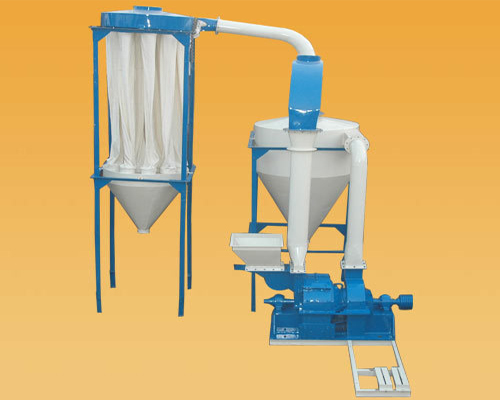
AMBICA Pulveriser offered comes backed by latest technology support and allows optimum processing support as demanded by the customers. Further, these pulverizing systems also allows for superior production capacity with advantage of low energy consumption. Some of its features include allows production of superfine powder to coarse powder; design modifications can also be done according to customers' suggestion; feeding of raw material controlled through frequency converter; allows for stable feeding; use of anti-wearing parts for lasting working; off-line clear dust in dust catcher; more efficient to clear dust.
Features:
Enhanced operational life
Reasonable prices
Easy to maintain
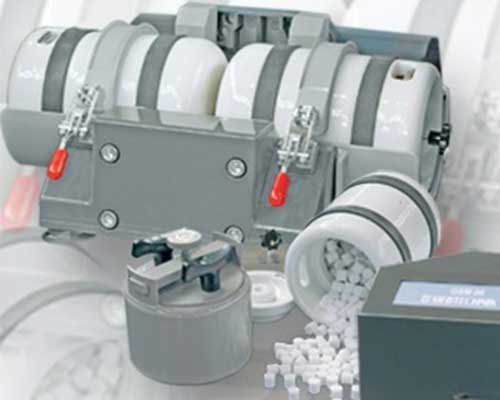
This vibration mill is suitable for grinding even the very hardest materials to high degrees of fineness and simultaneously mixing them intensively. The mill is of welded steel design with an imbalance drive for producing the circular vibrations, which also cause additional circumferential movement of the grinding balls in the opposite direction to that of the drive.lt is powered by a three-phase motor. The Comminution occurs in steel grinding vessels or for non-ferrous grinding in ceramic vessels.
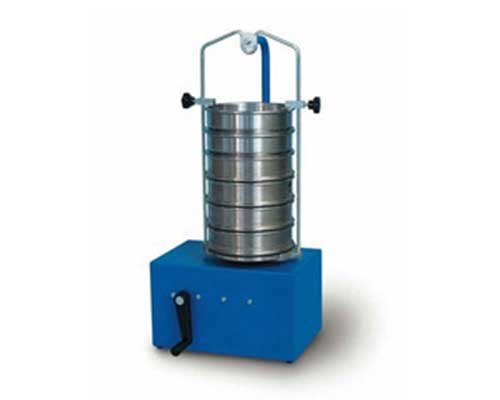
It is a gravity-screening machine, the three dimensional screening action has a vertical dominance. Due to this motion, the feed material is distributed evenly over the screen area and the vertical dominance ensures quick separation.
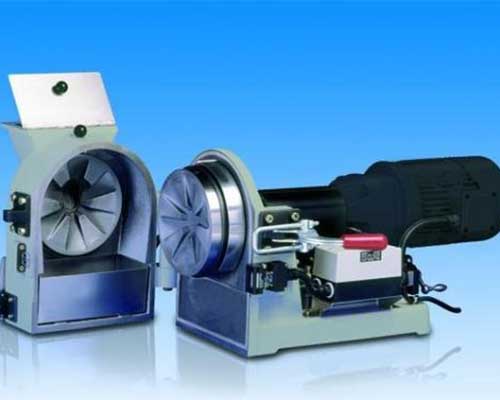
The disc mill is suitable for finely grinding soft to very hard materials with a Mohs hardness of up to 8, such as lignite, chalk, graphite, gypsum, bauxite, hard coal, ore, artificial fertilizers, blast furnace slag, quartz. Grinding in the disc mill is carried out between an immobile grinding disc and a rotating one, producing shearing and abrasion effects.lt is powered by a gear motor via an elastic coupling.
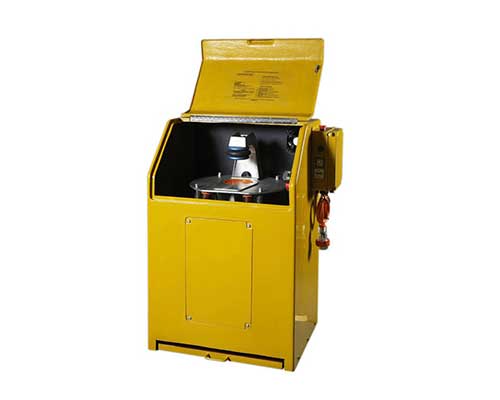
The Laboratory Disc Mill is used for the quick, dust free grinding of minerals, organic and ceramic materials, numerous brittle metals to analytical fineness, without loss of fines. By means of predominantly horizontal vibrations, the material is ground by impact and friction, usually in minutes and at the same time homogenised.

Planetary Ball Mills are used wherever the highest degree of fineness is required. In addition to well-proven mixing and size reduction processes, these mills also meet all technical requirements for colloidal grinding and provide the energy input necessary for mechanical alloying. The extremely high centrifugal forces of a planetary ball mill result in very high pulverization energy and therefore short grinding times.

These solidity testing drums are used to determine the tumbler strength for iron ore and coke. They can be used for any other bulk materials where the tumbler strength is of interest. Solidity testing drums of welded construction are produced in two sizes in accordance with the appropriate standards; they are equipped with the necessary bars, revolution counter and a collecting vessel.

This splitter is suitable for simple, rapid separation of freely flowing powders and pellets into 8 sample collectors. The outlets from the feed container can be sealed with a lever to allow the material to be filled, mixed and subsequently separated.
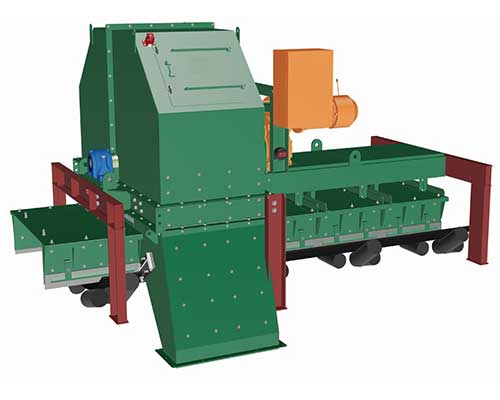
The hammer sampler is implemented for sampling materials from belt conveyors. The sampler’s removal principle resembles that of the sampling frame, serving as a reference sample from the stopped belt. The hammer sampler guides this sampling frame that is closed on one side in a circular movement through the material stream moving on the belt. It thus automatically removes a representative cross-section sample from the belt, corresponding to that of the sampling frame.

Roll crusher is also named double-roll crusher, roll-type crusher. It is usually used to crush the raw materials such as coal , coal gangue, coke , limestone, sulphur ore, phosphate rock and etc., which are usually crushed in middle or fine size by the way of roll extrusion .Roll crusher is widely used in the fields of ore dressing, chemical, cement, refractories, grinding materials, building materials, etc., and it has more excellent performance than the general machinery in crushing of building materials.
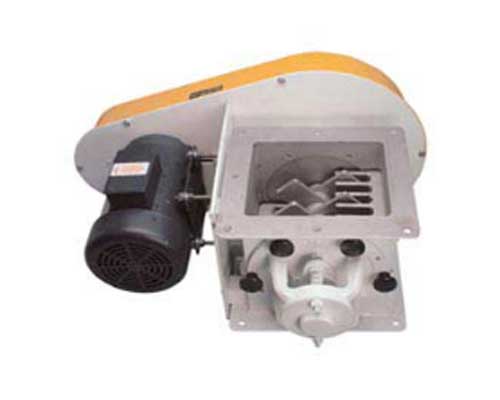
Ambica’s Lump Breaker is designed to provide a simple, more economical means of reducing compacted materials into smaller, granulated product required for most processing or packaging lines. The Lump Breaker improves product flow for a variety of applications including: sugar, salt, chemicals, cereal, kiln dust, resin, pigment, filter cake, pasta, fertilizer and more.
Portable crushing & screening plants
Stationary crushing & screening plants